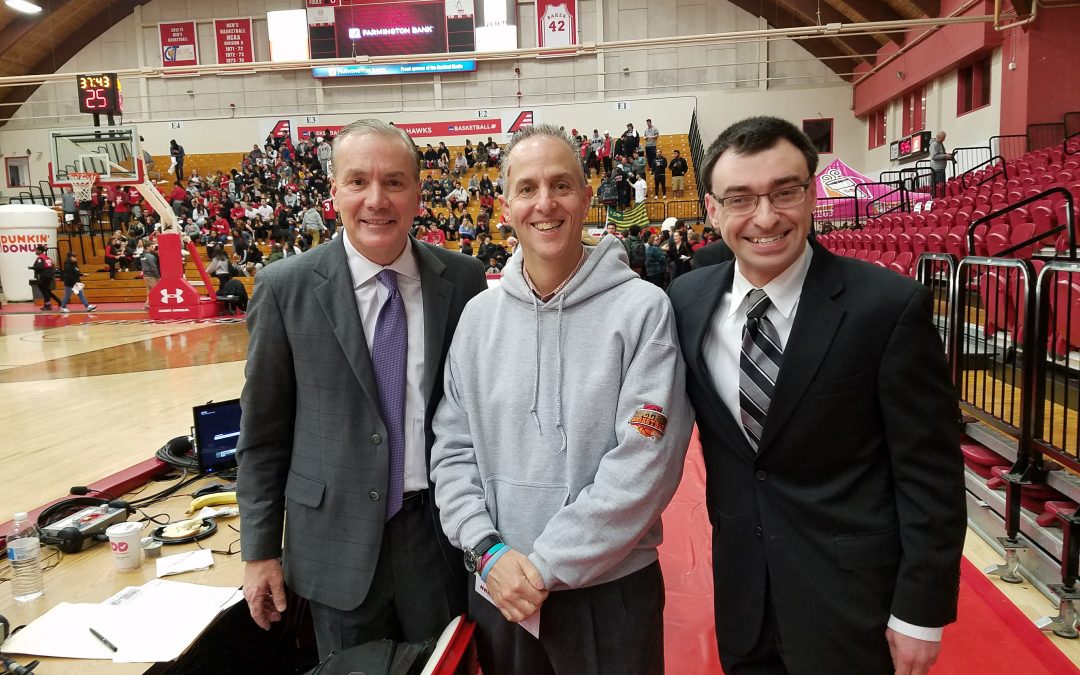 Why do sports fans watch sports? It’s not a trick question. Actually, it’s pretty simple. Sports fans watch sports to see the ultimate reality TV play out right before their eyes. Fans root for teams. They wear their team’s colors with pride. They live and die with their favorite players’ every at-bat, pitch, shot, throw, catch, kick and save. They celebrate with unbridled enthusiasm when their team wins and agonize every loss.
Why do sports fans watch sports? It’s not a trick question. Actually, it’s pretty simple. Sports fans watch sports to see the ultimate reality TV play out right before their eyes. Fans root for teams. They wear their team’s colors with pride. They live and die with their favorite players’ every at-bat, pitch, shot, throw, catch, kick and save. They celebrate with unbridled enthusiasm when their team wins and agonize every loss.
I AM that sports fan. An avid consumer with an insatiable appetite for all things sports. Growing up I read about sports, participated in sports, watched and listened to sports and memorized anything and everything tied to teams, players and stats. I played sports games with spinners, cards, and dice. I collected baseball, football, basketball and hockey cards thanks in large part to my grandpa and the candy store he co-owned in the Bronx (NY.) That passion became my avocation that in time became my career. A childhood dream come true. Fantasy evolving into reality.
My reality brought me to Bristol (CT) in 1993 as an associate producer for a brand new network. ESPN2. The rest, as they say, is history. And, oh what a history it was for nearly 23 years. Now, my reality has led me to a different sort of dream. A dream to take my childhood fandom, pair it with three decades of professional sports producing and broadcast experience, and work with colleges who are focused on producing live digital sporting events and shareable multimedia content.
The seed for that dream was planted last November when I produced and led an all-student broadcast for 30 men’s and women’s basketball games for the University of Hartford. During my nearly 23 years ESPN I had the good fortune to work with the best of the best, with the best resources, in some of the most hallowed and revered venues across pro and college sports. However, none of those experiences were any more rewarding than working hand-in-hand with college students and teaching them first-hand how to produce all aspects of a live sporting event. Each and every game they brought a thirst for learning and a passion to take what they learned and use it during the live events.
My job was made easier thanks to former ESPN technology guru Al Fong, who both taught a class in Hartford’s School of Communications, and created the framework, hardware and provided the equipment used for each production. What he taught his students, and what they learned, about setting up switchers, cameras, graphics programs, digital replay devices and audio mixers was impressive and beyond my expectations. Without all that technology there would be no broadcast. However, technology is only one part of the equation. Once you’ve connected every cable and flipped every switch your broadcast is only as good as your producing preparation and in-game readiness to react to live action and ever-changing storylines.
Investing in teaching students how to produce for all broadcast roles is as important as the infrastructure and equipment used to bring the live action to your fans and alumni. One without the other is incomplete. If your school has the infrastructure and equipment for live digital events, and wants to elevate the content and storytelling in your broadcasts, then invest in Levy Media Productions to make your broadcasts complete and the best they can be.
Image Credits: Sofie Brandt Photography.

